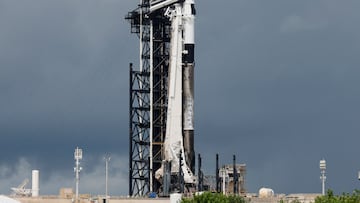When does the SpaceX Polaris Dawn crew return to Earth? Time and oxygen limited for astronauts
The Polaris Dawn mission made history with the first private spacewalk by two private citizens and exposed the entire crew of four to the vacuum of space.

The first of three Polaris program missions operated by SpaceX has successfully completed the first commercial spacewalk performed entirely by civilian astronauts. Even though only two of Polaris Dawn’s crew went outside the Dragon capsule, the two members that remained inside were also exposed to the vacuum of space.
That meant that all four had to wear EVA (extravehicular activity) suits during the spacewalk, but also meant that they used up a lot of oxygen. The suits themselves were specially designed to be scalable for future mass production for missions to the Moon, Mars and beyond. They can be used both during normal conditions inside the spacecraft and in the vacuum of space.
The mission of the program financed by fintech billionaire Jared Isaacman, who was one of the astronauts to leave the capsule, is to “demonstrate new technologies, conduct extensive research and ultimately culminate in the first flight of SpaceX’s Starship with humans on board.” according to its website.
Polaris Dawn will travel to an altitude of 1,400 km, attempt the first commercial spacewalk from Dragon, test Starlink-laser based communications, and conduct a wide range of research in microgravity before returning to Earth and splashing down off the coast of Florida pic.twitter.com/X4kGksg3Rd
— SpaceX (@SpaceX) September 10, 2024
When does the SpaceX Polaris Dawn crew return to Earth? Time and oxygen limited for astronauts
The Polaris Dawn five-day mission finally got underway on the morning of September 10 after several weather delays. Not just for the launch but also for when the crew returns as they will need calm waters for the splashdown.
That is because the mission is using an “open loop” system which unique to the Dragon spacecraft allowing it to act as its own airlock. “Dragon uses pure nitrogen during [repressurization], which mixes with the pure oxygen being released into the cabin via the open loop system that keeps the EVA suits pressurized,” SpaceX explained in a social media post.
Related stories
That makes the whole process is oxygen-intensive and the crew have “got five, six days — maybe you can stretch it — of life support on the vehicle,” according to Isaacman speaking to CNN. “So you have to be really sure about where you have fault tolerance and redundancy in your systems. You’ve got to be really sure about the weather (for the splashdown return to Earth),” he added.
While the spacewalk lasted for about 10 minutes, the entire process from venting to repressurization took roughly one hour and 45 minutes. They will now spend a couple of more days in space before splashing down off the coast of Florida sometime this weekend.



Complete your personal details to comment